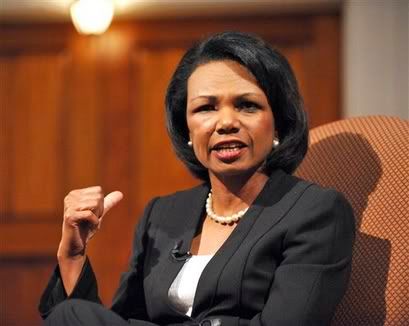Transcript:
MADDOW: Many of you have already donated money to help the millions of people affected by the earthquake in Haiti. Many more of you will donate in days and weeks ahead. If you donate by credit card, American Express and Visa and Mastercard have all announced that they will waive the few percentage points those companies would normally skim for themselves off of your payment. And good on them for that.
Some of you, however, will end run around the credit card companies altogether to donate money in a completely novel way. It‘s one of the ways that I personally gave today. I gave by text message. After the Indian Ocean tsunami in 2004, Americans donated about $200,000 to charity through text messaging.
After Hurricane Katrina in 2005, Americans donated about twice that, about $400,000 through text messaging. Last year, for all of 2009, for all causes, fundraising via cell phone hit the $2 million mark nationwide. That was all very good, very philanthropic.
But this time, for this disaster, the charitable donation numbers we are seeing dwarf those totals. A bunch of organizations are raising money this way for Haiti. But to just give you a ballpark idea of donate-by-texting‘s success, the American Red Cross alone has raised almost $6 million through text message donations in two days.
And the icing is that wireless carriers, AT&T, Verizon and T-Mobile have agreed to waive their standard text messaging fees for those texted donations. Excellent.
Except for Sprint. Sprint not so much with the excellent. They told MSNBC today that standard text messaging charges will apply. They did say that their customers are free to buy text messaging plans from Sprint to cover the cost of that one text. Helpful. Thanks, Sprint.
Joining us now is Tony Aiello. He‘s the CEO and co-founder of M-Give one of the companies making it possible to donate by phone. M-Give is a for-profit company. They‘ve waived their start-up in transaction fees for the charities raising money for the crisis in Haiti in this sway. Mr. Aiello, thanks very much for joining us.
TONY AIELLO, CEO AND CO-FOUNDER, M-GIVE: Thanks for having me this evening, Rachel.
MADDOW: I know that you‘re waiving all your fees for donations to this disaster. Thank you. Before this quake, tell me how this service worked, how it would be set up. I know the donation amount would show up on a customer‘s phone bill.
AIELLO: Yes. That‘s exactly correct, as using this example as perfect because it works for day-to-day fundraising just like it does for disaster relief. So, in effect, the mobile user would, in this case, text the word Haiti to the number 90999 and receive a text message back asking them to confirm by replying with “yes.”
At that point, their mobile phone bill is tagged with a $10 donation. So that donor then actually pays that to their wireless carrier the next time they pay their bill. And the funds are then funneled to a 501 C3 called M-Give Foundation and then distributed to the appropriate charities. In this case - this campaign - all the funds are going to the Red Cross.
MADDOW: I would also say that if you‘re worried about getting spam on your cell phone because you‘ve done this, I did this today, and after you get sent the “yes” and you get the confirmation, you then get a note that says, “Do you keep getting texts from the American Red Cross?” You can write back and say “no” if you don‘t want to. So it‘s sort of a “whew” if you‘re worried about that.
One of the things that I am worried about this, although I think
it‘s cool to donate at the spur of the moment -
AIELLO: OK.
MADDOW: I‘m worried it‘s a quick way to donate but it takes too long this way for the money to actually arrive at the charity that I just donated to. Can you explain that?
AIELLO: Well, sure. As I mentioned a moment ago, when the - if you and I both give today, we might be paying our mobile bill on a different cycle or a different monthly billing cycle.
So the carriers have to collect all of that money and then distribute it to the 501-C3 clearing house and then distribute it to the charity. So everyone in the chain wants to get the money to the Red Cross as fast as possible.
And all parties involved - they‘re working to try to streamline that effort. And right now, in traditional day-to-day fundraising, it‘s about a 90-day - 90 days between the time that the mobile user presses the buttons on the phone and the dollars arrive at the charity.
We hope to streamline that for this disaster based on the size and scope of this situation. The tragedy boggles the mind, so everybody wants to get the money to the charity as fast as possible.
That said, because this is such a major disaster, I think people are going to be needing dollars for quite some time. So you know, clearly your point is well taken. The goal is to get the money to the charity as quickly as possible.
MADDOW: Mr. Aiello, I think it‘s an incredibly successful way to raise money. If that window does get shorter than the time it is now and you talk about these details on your Web site, let us know and we‘ll tell people. We‘ll help get the word out.
Tony Aiello is the CEO and the co-founder of M-Give, a company that allows you to text donations to nonprofits. As Mr. Aiello Said, if you‘d like to text a donation for relief to Haiti, we have a list of charities that accept text donations posted on our Web site, which is Rachel.MSNBC.com. Mr. Aiello, thank you. And we will be right back.







